Photograph and caption by Robert Freidus. Formatting, perspective correction, and commentary by George P. Landow. [You may use these images without prior permission for any scholarly or educational purpose as long as you (1) credit the photographer and (2) link your document to this URL in a web document or cite the Victorian Web in a print one.]

Education flanked by Science and Art. The former Cripplegate Institute (now offices), 1 Golden Lane, London EC1. 1894. Architects: Sidney R. J. Smith and F. Hammond. Portland stone, 3.5m high x 5.8 wide. Science, leaning on a globe, has chemical apparatus at her feet. Art, who like her companion, gazes over hert shoulder at Education, holds a palette. A Grade II listed building originally containing “containing libraries, auditorium, committee rooms and classrooms” (British Listed Buildings).
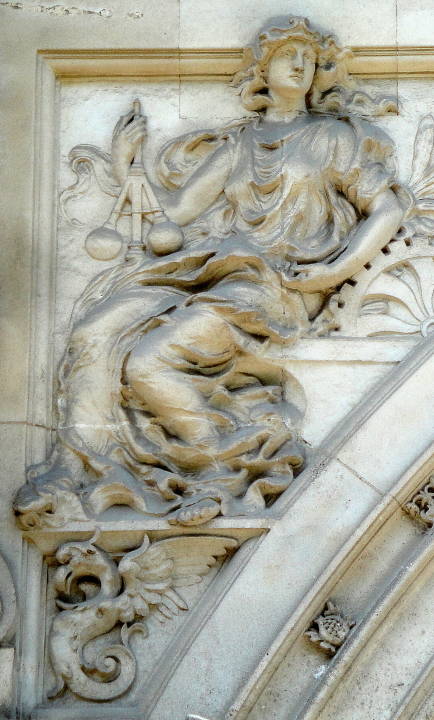
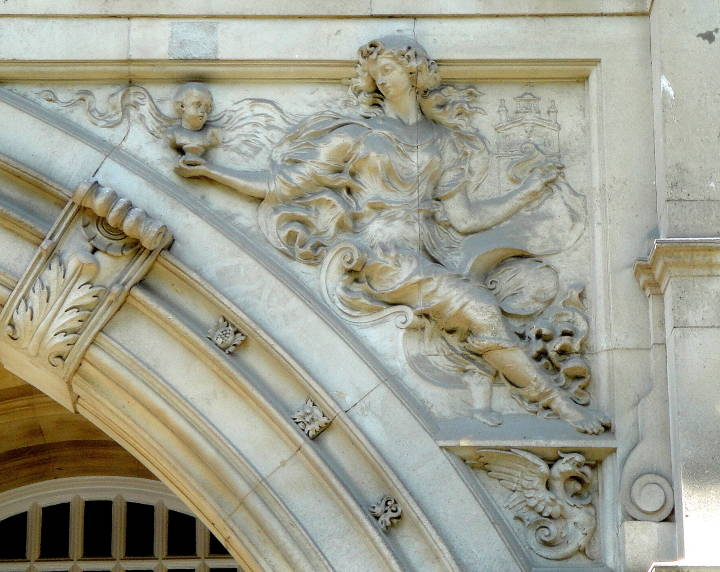
Left: Science with a governor (speed controller) for a steam engine. Right: Art holding the bust of a child and a building bheind her at upper right. These figures on the spandrels — see the photograph below left — with drapery and hair in s-curves appear by a different sculptor and in a very different style than the more static classical figures on the pediment above, the faces on the right looking like something from early Italian Reniassance painting. [Click on these images and those below for larger pictures.]
According to the Cripplegate's Foundation's website,
The Foundation's origins lie in gifts and donations made to the Church of St. Giles Without Cripplegate for 'the poor and needy'. The parish was named after one of the gates in the walls around the City of London. It extended some distance to the north, and included the ancient manor of Finsbury. Today, the medieval church of St. Giles stands in the heart of the modern Barbican estate.
John Sworder made the first recorded gift in his will, dated 2nd April 1500. Many people followed John Sworder's example, leaving legacies for education or to assist the poor [...] Cripplegate Foundation was established in 1891 by a scheme made under the London Parochial Charities Act of 1883. This amalgamated all the charitable donations previously administered as separate trusts.
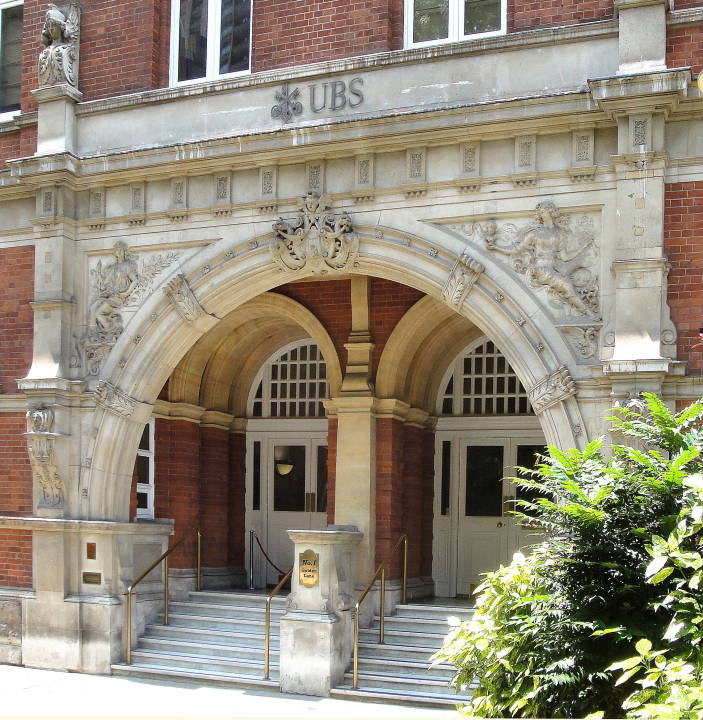

Entrance and front elevation of the former Cripplegate Institute.
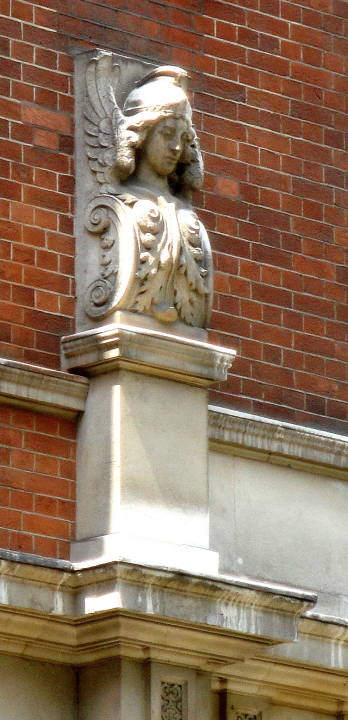
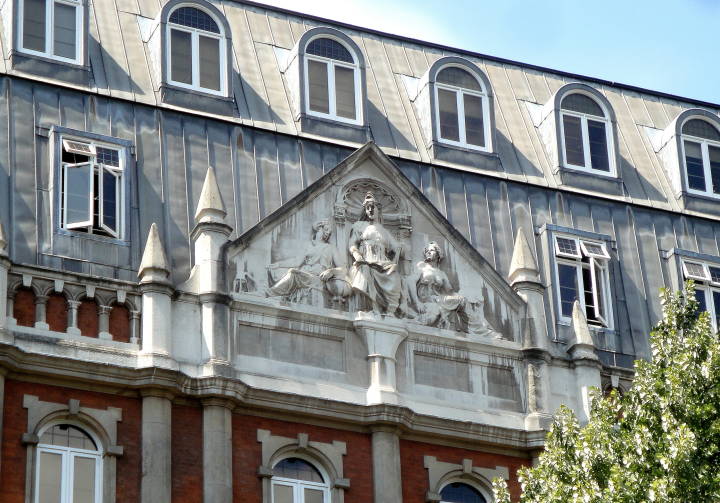
Left: A winged figure. Right: the architectural setting of the pedimental sculpture.
Bibliography
“History.” Cripplegate Foundation. Web. 11 July 2011.
“Cripplegate Institute, City Of London.” British Listed Buildings. Web. 11 July 2011.
Ward-Jackson, Philip. Public Sculpture of the City of London. Liverpool: Liverpool University Press, 2003.
Last modified 4 March 2024